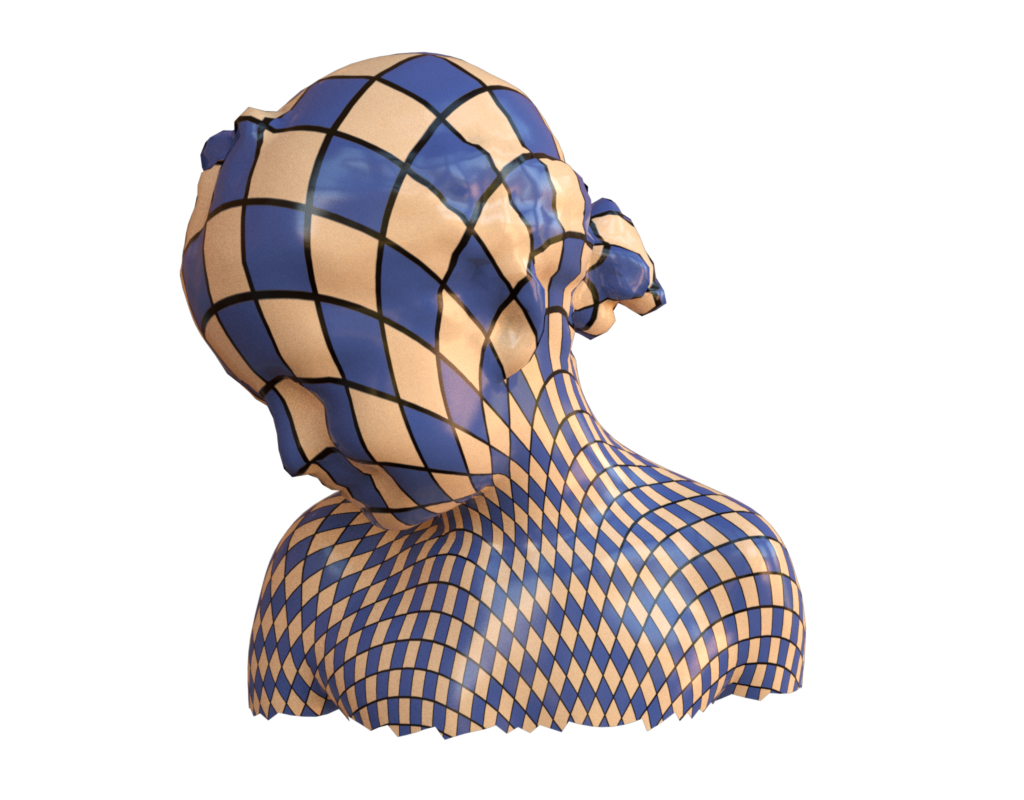Scalable Locally Injective Mappings¶
This example aims to reproduce Figure 3 and 10 from the paper Scalable Locally Injective Mappings.
Data¶
The data used in this example is the official data released by the authors.
Code¶
#!/usr/bin/env python3
import hakowan as hkw
import pathlib
import math
# First, we define a base layer with the desired material+texture setup.
# This base layer serves as a template, where we will extend it with different
# data components later.
#
# Note that we are using image-based texture for color in this example.
# The UV is scaled by 10 times to have more repetitions of the texture.
base = hkw.layer().material(
"Principled",
color=hkw.texture.Image(
filename=pathlib.Path("data/texture.png"),
uv=hkw.attribute("texcoord", scale=10),
),
roughness=0.2,
)
# Figure 3
fig3 = base.data("data/fig3.obj").rotate(axis=[0, 1, 0], angle=math.pi)
# Move the camera position closer.
config = hkw.config()
config.sensor.location = [0, 0, 3]
# Render!
hkw.render(fig3, config, filename="results/fig3.png")
# Figure 10
# The input mesh comes at an odd orientation.
# We apply two rotations to fix the orientation issue.
# First, we rotate the mesh around the x-axis by -45 degrees.
# Then, we rotate the mesh around the y-axis by 135 degrees.
fig10 = (
base.data("data/fig10_uniform.obj")
.rotate(axis=[1, 0, 0], angle=-math.pi / 4)
.rotate(axis=[0, 1, 0], angle=3 * math.pi / 4)
)
# Render!
hkw.render(fig10, config, filename="results/fig10.png")

